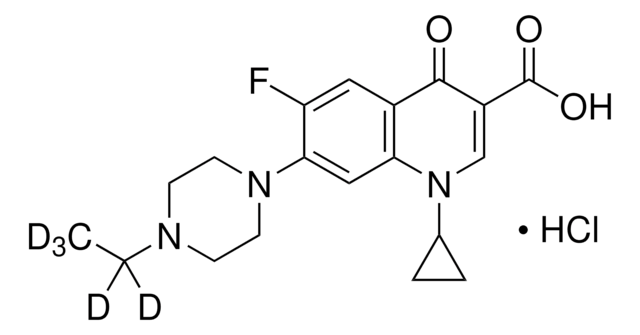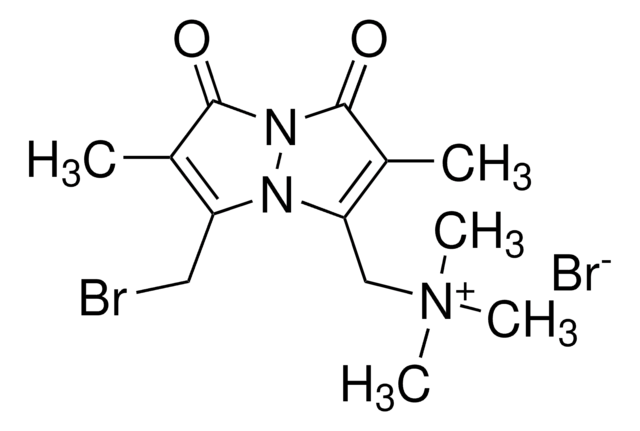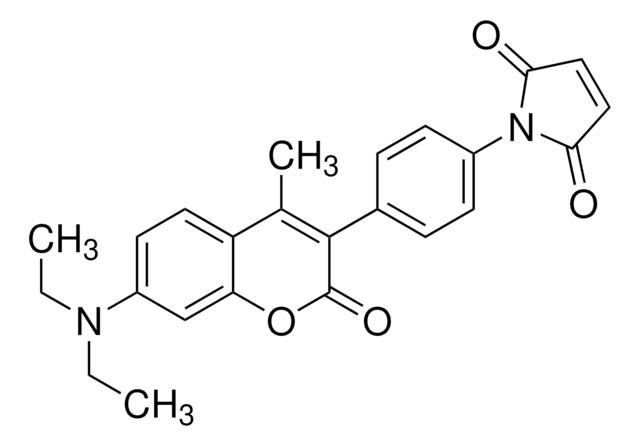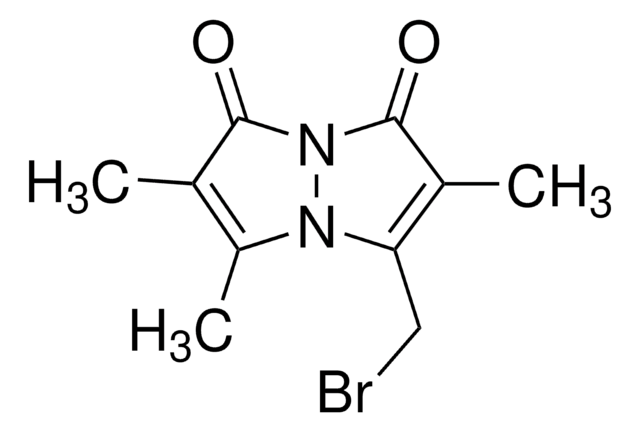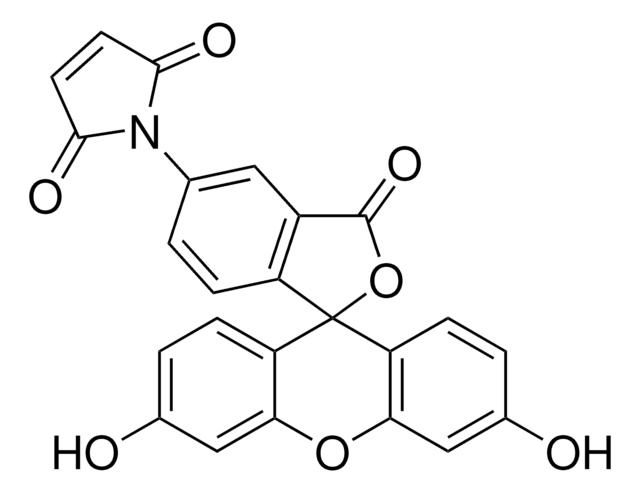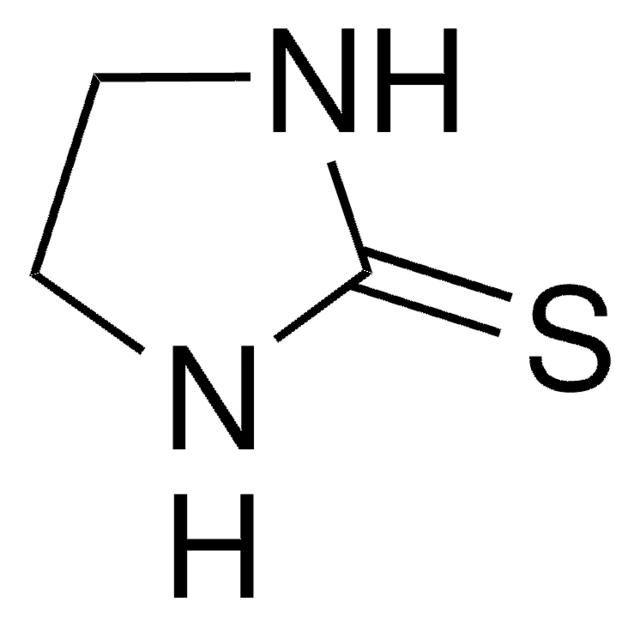34025
Dibromobimane
BioReagent, suitable for fluorescence, ≥95.0% (CHN)
About This Item
Produits recommandés
Gamme de produits
BioReagent
Niveau de qualité
Essai
≥95.0% (CHN)
Pf
170-172 °C (lit.)
Solubilité
DMF: soluble
acetonitrile: soluble
chloroform: soluble
Fluorescence
λex 391 nm in methanol
λex 393 nm; λem 477 nm in 0.1 M Tris pH 7.0, gutathione red
Adéquation
suitable for fluorescence
Température de stockage
2-8°C
Chaîne SMILES
CC1=C(CBr)N2N(C1=O)C(=O)C(C)=C2CBr
InChI
1S/C10H10Br2N2O2/c1-5-7(3-11)13-8(4-12)6(2)10(16)14(13)9(5)15/h3-4H2,1-2H3
Clé InChI
OSIYFMVMZXJKSP-UHFFFAOYSA-N
Application
Conditionnement
Autres remarques
Mention d'avertissement
Warning
Mentions de danger
Conseils de prudence
Classification des risques
Eye Irrit. 2 - Skin Irrit. 2 - STOT SE 3
Organes cibles
Respiratory system
Code de la classe de stockage
11 - Combustible Solids
Classe de danger pour l'eau (WGK)
WGK 3
Point d'éclair (°F)
Not applicable
Point d'éclair (°C)
Not applicable
Équipement de protection individuelle
dust mask type N95 (US), Eyeshields, Gloves
Faites votre choix parmi les versions les plus récentes :
Déjà en possession de ce produit ?
Retrouvez la documentation relative aux produits que vous avez récemment achetés dans la Bibliothèque de documents.
Notre équipe de scientifiques dispose d'une expérience dans tous les secteurs de la recherche, notamment en sciences de la vie, science des matériaux, synthèse chimique, chromatographie, analyse et dans de nombreux autres domaines..
Contacter notre Service technique